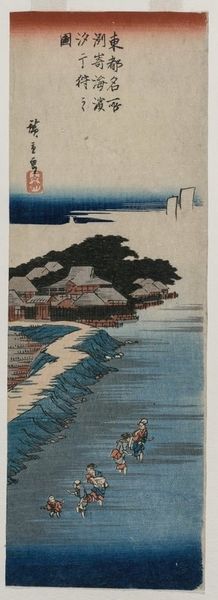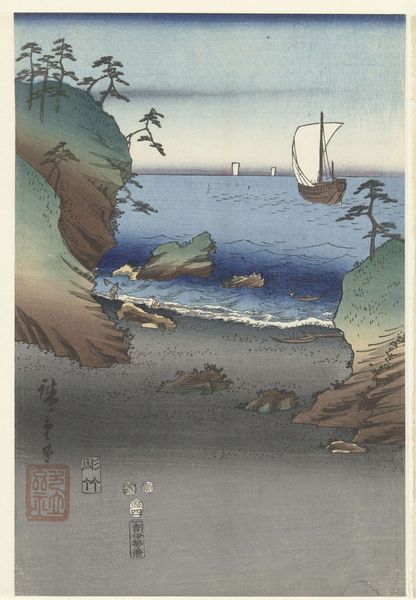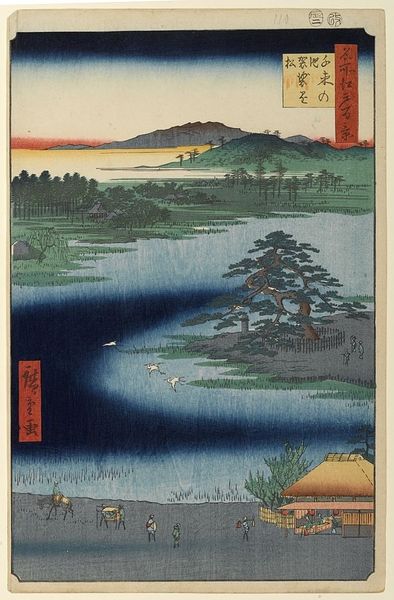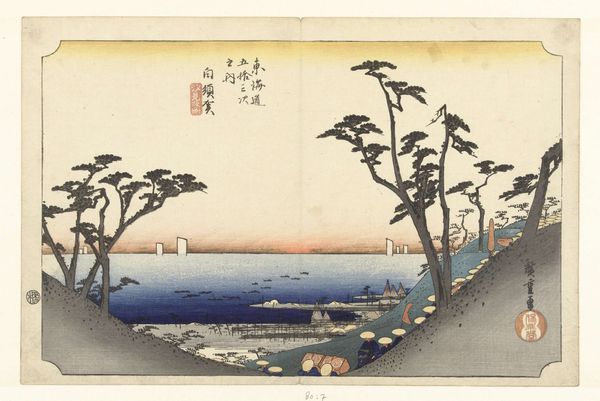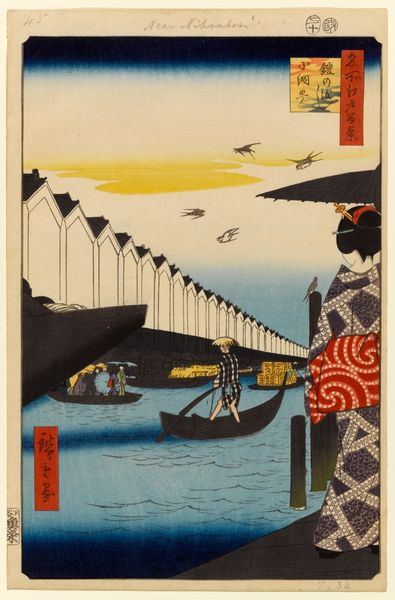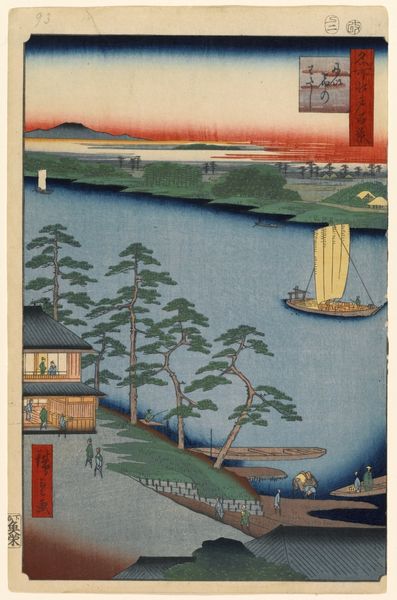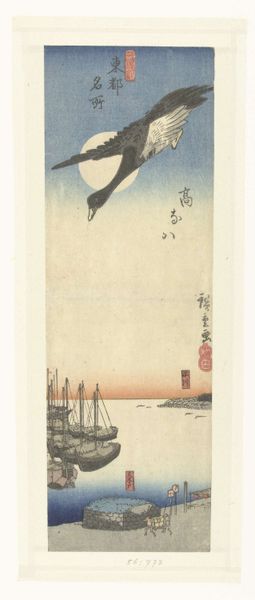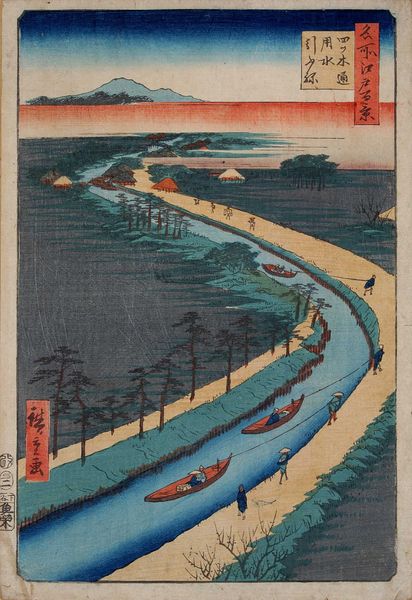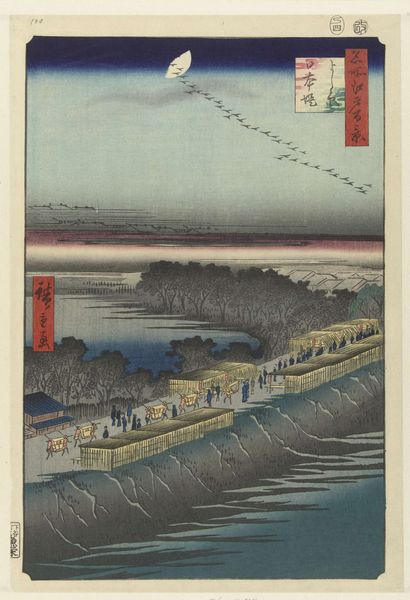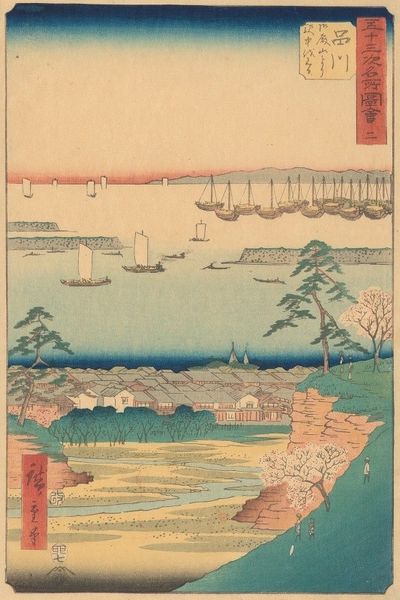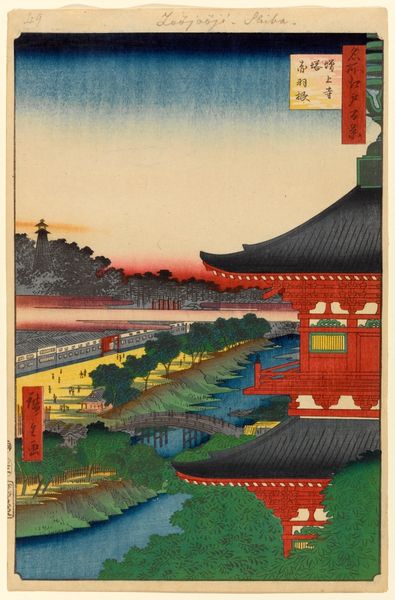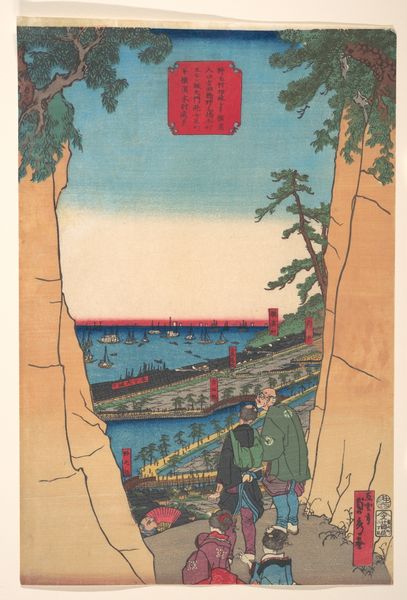
Schelpen verzamelen bij laag water op het strand van Susaki 1833 - 1837
0:00
0:00
utagawahiroshigei
Rijksmuseum
print, watercolor
#
water colours
# print
#
asian-art
#
landscape
#
ukiyo-e
#
watercolor
#
watercolour illustration
#
watercolor
Dimensions: height 373 mm, width 125 mm
Copyright: Rijks Museum: Open Domain
Curator: Welcome. Here we have “Schelpen verzamelen bij laag water op het strand van Susaki,” a captivating print by Utagawa Hiroshige, created sometime between 1833 and 1837. It’s currently held here at the Rijksmuseum. Editor: Immediately, I'm struck by the gradient of the water, from a deep indigo to an almost ethereal light blue at the horizon. It creates this serene yet slightly melancholic mood. Curator: Hiroshige's mastery is evident in how he organizes the pictorial space. Notice how the diagonal coastline draws the eye from the bottom right up towards the village. The use of line—the rhythmic repetition of the pilings supporting the buildings, for instance—creates a sense of depth and movement. Editor: The figures wading in the water seem dwarfed by the vastness of the sea, almost as if their everyday activity is set against a cosmic backdrop. I wonder what this speaks to, socially. The relationship between humans and nature? The precariousness of life within the currents of economics, class, gender, and power? Curator: Possibly, but let’s consider the stylistic choices. Hiroshige simplifies the forms. Look at the distant mountains, mere outlines, but completely evocative. This reductive approach intensifies the print’s contemplative qualities. Editor: I cannot overlook those outlines, almost hieroglyphic, at the top of the composition—what could they symbolize? Perhaps a spiritual reference for safety. Also, observe the social dynamics as some in this woodblock print could have found this seaside escape far more available based on socioeconomic status during this period. Curator: You propose the formal and symbolic contribute equally. To reiterate the material, though, consider that this is a woodblock print. The artist’s skill lies in extracting a maximum range of visual texture from relatively limited means, an early form of reproduction making the work accessible, conceptually mirroring your reading of the piece, ironically. Editor: So, while focusing on surface qualities enriches appreciation, remember also the socio-political contexts informing those artistic choices. To view this as simply a landscape aestheticizes historical dynamics of class. Curator: Indeed, to integrate formal concerns with questions about life conditions yields a more complete, contemporary art experience. Editor: This has offered a valuable expanded impression to appreciate this artwork through distinct angles of perspective.
Comments
No comments
Be the first to comment and join the conversation on the ultimate creative platform.
